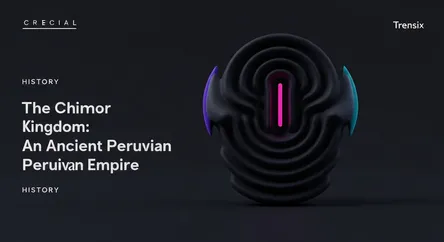History
The Chimor Kingdom: An Ancient Peruvian Empire

Discover the Chimor Kingdom, a powerful pre-Incan civilization known for its massive adobe city of Chan Chan and sophisticated artistry.
What is it?
The Kingdom of Chimor was a powerful civilization that flourished on the northern coast of modern-day Peru from about 900 CE until it was conquered by the Inca Empire around 1470 CE. The Chimú people, who built the kingdom, were successors to the Moche culture. Their capital was Chan Chan, the largest adobe city in the pre-Columbian Americas and a UNESCO World Heritage site. Chimor was the largest kingdom in the Late Intermediate Period, controlling over 600 miles of coastline. They were renowned for their sophisticated agriculture, which utilized extensive irrigation canals, and for their distinctive monochromatic black pottery and intricate metalwork in gold, silver, and copper.
Why is it trending?
The Chimor Kingdom gains attention due to ongoing archaeological discoveries and its cultural significance. The massive archaeological site of Chan Chan continues to be a focus of research and tourism, revealing insights into ancient urban design. Furthermore, recent discoveries, such as the largest known site of child sacrifice in history, have brought the Chimú's complex ritual practices into the global spotlight, generating documentaries and widespread media interest. As a major empire that was eventually subsumed by the more famous Inca, the story of Chimor provides a crucial understanding of the political landscape of the Andes before European contact.
How does it affect people?
The legacy of the Chimor Kingdom is a significant part of Peru's national heritage, attracting tourism and providing a tangible link to the country's pre-Incan past. For historians and archaeologists, the Chimú offer a case study of a highly centralized, urban society with advanced engineering and artistic traditions. Their conquest by the Inca also demonstrates how the Inca empire incorporated the skills of conquered peoples; Chimú artisans were forcibly moved to the Inca capital of Cuzco to produce luxury goods for the Inca elite. Today, the preservation of sites like Chan Chan presents challenges from environmental factors and urban encroachment, raising awareness about cultural heritage conservation.